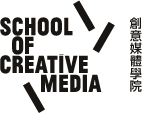 Richard Allen works in the areas of film theory and aesthetics. His first book, Projecting Illusion (1997), articulated a sophisticated version of the illusion theory of representation. He edited, with Murray Smith, one of the first anthologies of analytic film theory, Film Theory and Philosophy (1999) and co-edited, with Malcolm Turvey, Wittgenstein, Theory, and the Arts (2001). He is the author of the widely read book, Hitchcock’s Romantic Irony (2007), which examines the relationship between sexuality and style in Hitchcock’s work. Until recently he was editor of the Hitchcock Annual (Columbia University Press). He is working on a book called Bollywood Poetics and is also researching The Passion of Christ and the Melodramatic Imagination. He is currently Dean and Chair Professor of Film and Media Art at the School of Creative Media of the City University of Hong Kong.
Richard Allen works in the areas of film theory and aesthetics. His first book, Projecting Illusion (1997), articulated a sophisticated version of the illusion theory of representation. He edited, with Murray Smith, one of the first anthologies of analytic film theory, Film Theory and Philosophy (1999) and co-edited, with Malcolm Turvey, Wittgenstein, Theory, and the Arts (2001). He is the author of the widely read book, Hitchcock’s Romantic Irony (2007), which examines the relationship between sexuality and style in Hitchcock’s work. Until recently he was editor of the Hitchcock Annual (Columbia University Press). He is working on a book called Bollywood Poetics and is also researching The Passion of Christ and the Melodramatic Imagination. He is currently Dean and Chair Professor of Film and Media Art at the School of Creative Media of the City University of Hong Kong.
 Sandra Álvaro holds a European Doctorate in Philosophy from the Universitat Autònoma de Barcelona, and is also a new media artist. Her research work revolves around the definition of the contemporary post-digital situation, with a particular focus on artistic production and theory and participatory urban design. To this end, she studies the material conditions and social processes linked to technological innovations such as the Internet of Things, data visualisation, and digital fabrication. She has carried out projects and participated in international workshops at the Institute for Pure and Applied Mathematics at UCLA and the Laboratoire Paragraphe/CITU, University Paris 8, and taught in the Roy Ascott Studio BA in Technoetic Arts at De Tao Masters Academy in Shanghai. She has published in refereed journals such as the Technoetics Art Journal (Intellect) and Artnodes and has participated in numerous international congresses including CAC 2016 (Paris), ISEA 2015 (Vancouver), Re-new 2013 (Copenhagen) and the CR13 International Research Conference. Her work has been exhibited at many museums and cultural centres including Caixa Forum, the Generalitat de Catalunya’s Department of Culture and Media, Casal Solleric in Palma de Mallorca (Antoni Gelabert Visual Arts Award), MOCA (Taipei) and the Museo de Arte Moderno de Toluca (Mexico) and in numerous festivals and galleries.
Sandra Álvaro holds a European Doctorate in Philosophy from the Universitat Autònoma de Barcelona, and is also a new media artist. Her research work revolves around the definition of the contemporary post-digital situation, with a particular focus on artistic production and theory and participatory urban design. To this end, she studies the material conditions and social processes linked to technological innovations such as the Internet of Things, data visualisation, and digital fabrication. She has carried out projects and participated in international workshops at the Institute for Pure and Applied Mathematics at UCLA and the Laboratoire Paragraphe/CITU, University Paris 8, and taught in the Roy Ascott Studio BA in Technoetic Arts at De Tao Masters Academy in Shanghai. She has published in refereed journals such as the Technoetics Art Journal (Intellect) and Artnodes and has participated in numerous international congresses including CAC 2016 (Paris), ISEA 2015 (Vancouver), Re-new 2013 (Copenhagen) and the CR13 International Research Conference. Her work has been exhibited at many museums and cultural centres including Caixa Forum, the Generalitat de Catalunya’s Department of Culture and Media, Casal Solleric in Palma de Mallorca (Antoni Gelabert Visual Arts Award), MOCA (Taipei) and the Museo de Arte Moderno de Toluca (Mexico) and in numerous festivals and galleries.
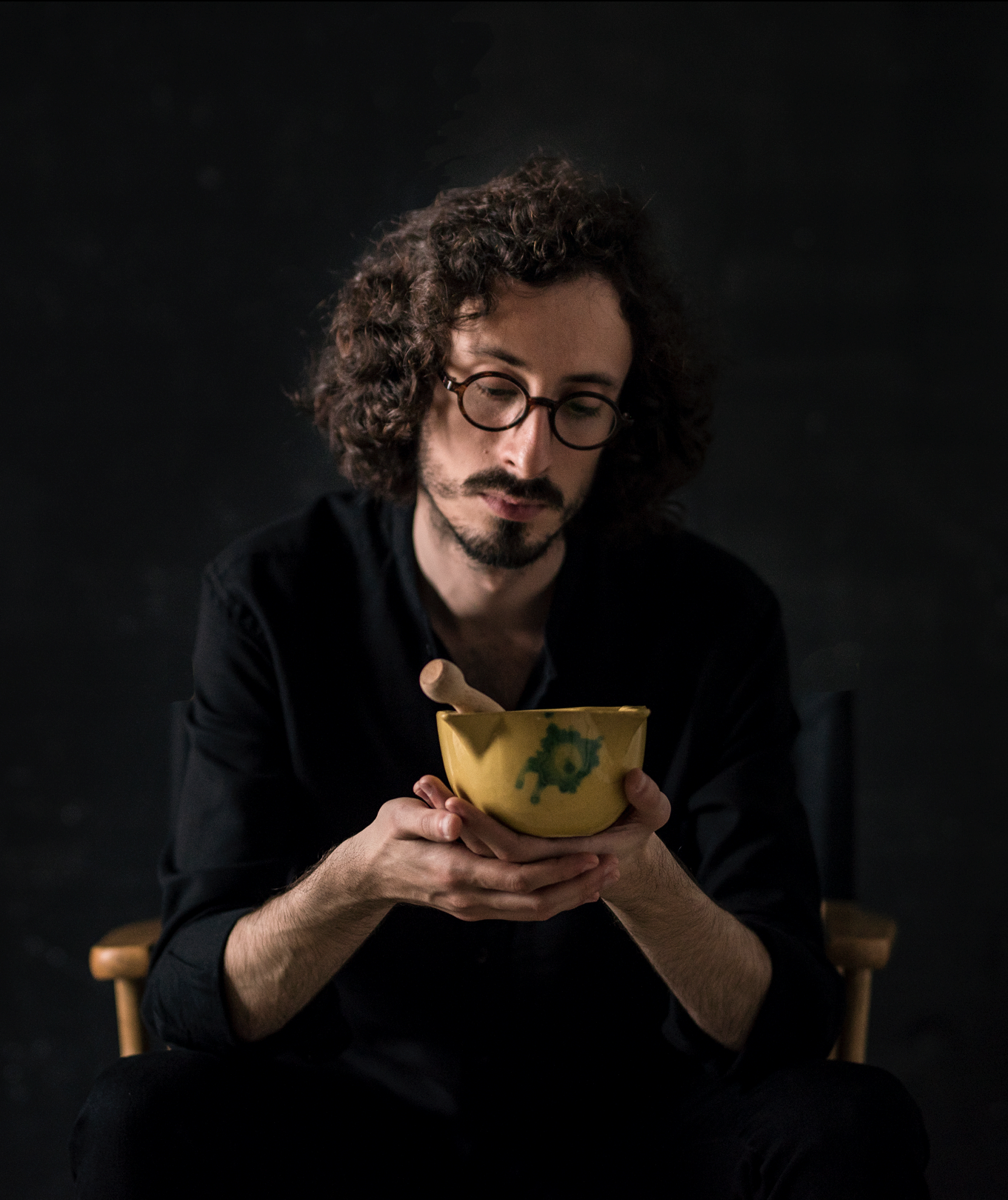 Albert Barque-Duran is an artist and postdoctoral research in cognitive science at the City University of London. His research concerns new approaches and frameworks for cognitive modelling and judgment and decision-making. His artwork and performances are inspired by his research and combine classical techniques from fine arts such as oil painting, data, digital arts and experimental electronic music. He has exhibited and performed at Sónar+D (Barcelona), Creative Reactions (London), Cambridge Neuroscience Society (Cambridge, UK), Max Planck (Berlin), and the SciArt Center (New York).
Albert Barque-Duran is an artist and postdoctoral research in cognitive science at the City University of London. His research concerns new approaches and frameworks for cognitive modelling and judgment and decision-making. His artwork and performances are inspired by his research and combine classical techniques from fine arts such as oil painting, data, digital arts and experimental electronic music. He has exhibited and performed at Sónar+D (Barcelona), Creative Reactions (London), Cambridge Neuroscience Society (Cambridge, UK), Max Planck (Berlin), and the SciArt Center (New York).
 Álvaro Cassinelli is a researcher, inventor and media artist. He received a Ph.D. in Physics/Optics from the University of Paris X. He had previously received an engineering degree from Telecom Paris Tech specializing in image processing. He is currently visiting researcher at the Institute Langevin/ESPCI (Paris). He has held internships at the Optoelectronic Lab at Telecom Paris Tech and the Quantum Optics Lab at Ecole Polytechnique (Paris), among others. He has carried out research on Human Computer interfaces using novel optical technologies, in particular smart sensors using laser technology. He has also worked in the areas of ubiquitous computing and augmented inter-personal communication. His Khronos Projector won an Honorary Mention at the Prix Ars Electronica. Awards received include the Grand Prize (Art Division) at the Japan Media Art Festival and the Nissan Research Challenge Innovative Concept Award.
Álvaro Cassinelli is a researcher, inventor and media artist. He received a Ph.D. in Physics/Optics from the University of Paris X. He had previously received an engineering degree from Telecom Paris Tech specializing in image processing. He is currently visiting researcher at the Institute Langevin/ESPCI (Paris). He has held internships at the Optoelectronic Lab at Telecom Paris Tech and the Quantum Optics Lab at Ecole Polytechnique (Paris), among others. He has carried out research on Human Computer interfaces using novel optical technologies, in particular smart sensors using laser technology. He has also worked in the areas of ubiquitous computing and augmented inter-personal communication. His Khronos Projector won an Honorary Mention at the Prix Ars Electronica. Awards received include the Grand Prize (Art Division) at the Japan Media Art Festival and the Nissan Research Challenge Innovative Concept Award.
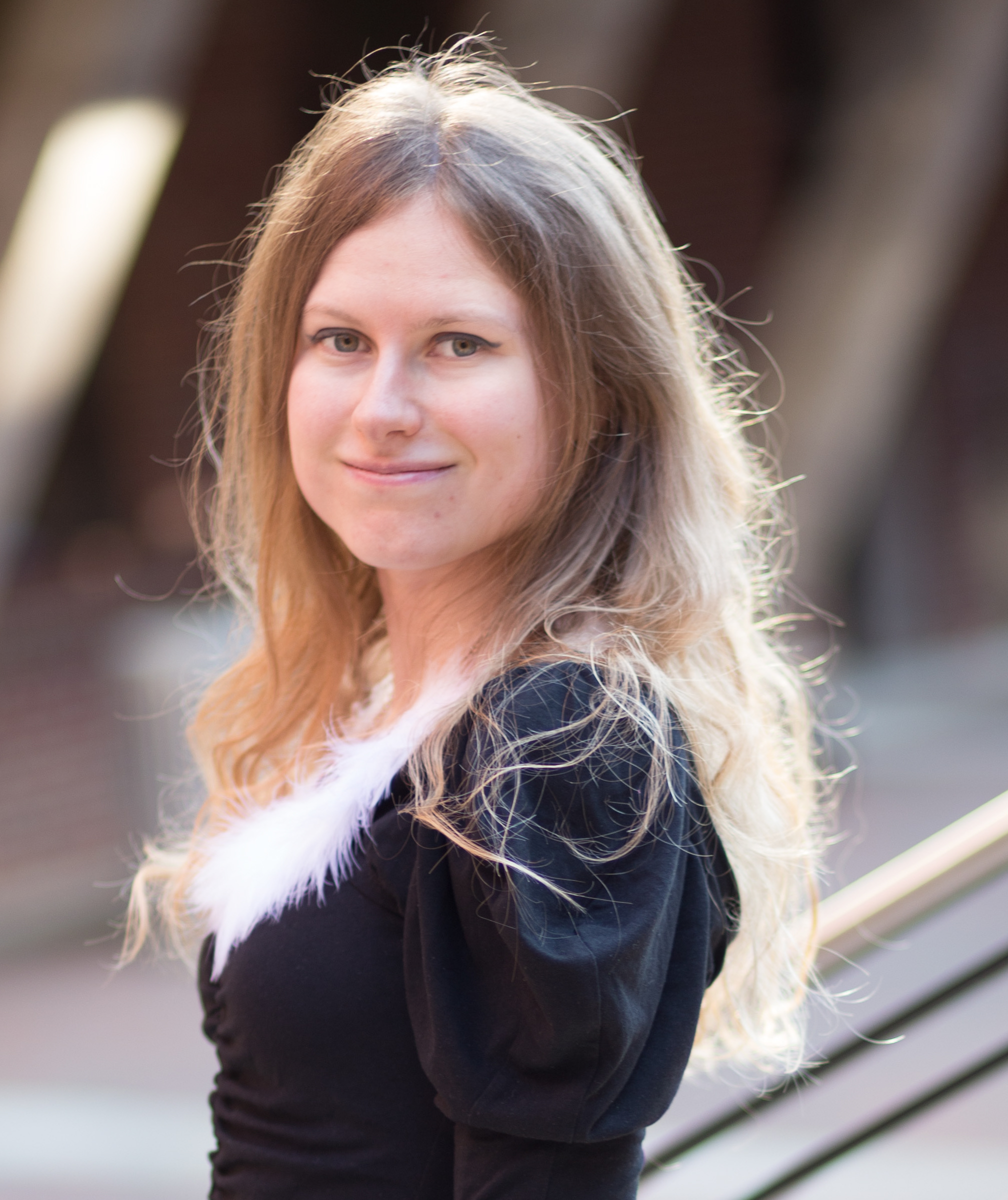 Luba Elliottis a curator, artist and researcher specialising in artificial intelligence in the creative industries. She is currently working to educate and engage the broader public about the latest developments in creative AI. As curator, she organised workshops and exhibitions on art and AI for The Photographers’ Gallery, the Leverhulme Centre for the Future of Intelligence and Google. Prior to that, she worked in start-ups, including the art collector database Larry’s List.
Luba Elliottis a curator, artist and researcher specialising in artificial intelligence in the creative industries. She is currently working to educate and engage the broader public about the latest developments in creative AI. As curator, she organised workshops and exhibitions on art and AI for The Photographers’ Gallery, the Leverhulme Centre for the Future of Intelligence and Google. Prior to that, she worked in start-ups, including the art collector database Larry’s List.
Fabrica is a communication research centre established in 1994 from a vision of Luciano Benetton and Oliviero Toscani.
It is based in Treviso, Italy, and it is financed by the Benetton Group. Today more than ever, Fabrica’s research is a cross-disciplinary commitment wherein communication interacts with other vital sectors like social and environmental sciences, food, cinema, art, poetry, journalism, design, spirituality, music, politics, economics, neuroscience, psychology, writing and theatre and is alert to the changes and trends of modern society. The team includes:
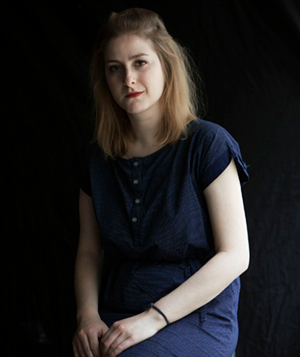 Coralie Gourguechon is an interdisciplinary designer & researcher working with user interfaces, experience design, interactive installation, and physical computing. She was one of 30 creatives selected for the ADC Young Guns Award 2016 and has been granted residencies at Hors-Pistes, Aterlier Luman, Ideo Munich, and Fabrica, where she was one of the key participants in the Recognition Project at the Tate.
Coralie Gourguechon is an interdisciplinary designer & researcher working with user interfaces, experience design, interactive installation, and physical computing. She was one of 30 creatives selected for the ADC Young Guns Award 2016 and has been granted residencies at Hors-Pistes, Aterlier Luman, Ideo Munich, and Fabrica, where she was one of the key participants in the Recognition Project at the Tate.
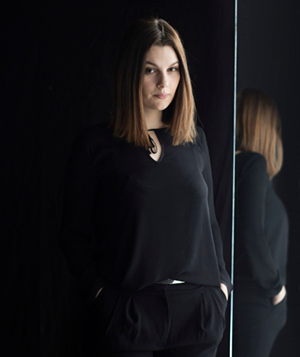 Monica Lanaro, project manager at Fabrica, has worked for the Dedalo Minosse Prize commissioning a building in Vicenza, for Festivaletteratura in Mantova and for the Peggy Guggenheim Collection in Venice.
Monica Lanaro, project manager at Fabrica, has worked for the Dedalo Minosse Prize commissioning a building in Vicenza, for Festivaletteratura in Mantova and for the Peggy Guggenheim Collection in Venice.
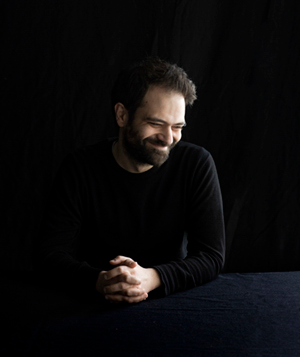 Angelo Semeraro studied Computer Science at the University of Bologna. Now based at Fabrica, his works include interactive installations and mobile applications experimenting with the perception of sounds and spaces, and the boundary between physical and digital.
Angelo Semeraro studied Computer Science at the University of Bologna. Now based at Fabrica, his works include interactive installations and mobile applications experimenting with the perception of sounds and spaces, and the boundary between physical and digital.
 Javier de Felipe is a neuroscientist who leads the Cajal Blue Brain project, which is part of the international Blue Brain project. He is co-director of the division of Molecular and Cellular Neuroscience of the Human Brain Project. He has received many international awards, including the Krieg Cortical Kudos Award granted by Cajal Club for his contributions to the study of the cerebral cortex. He is also an honorary member of the American Association of Anatomists.
Javier de Felipe is a neuroscientist who leads the Cajal Blue Brain project, which is part of the international Blue Brain project. He is co-director of the division of Molecular and Cellular Neuroscience of the Human Brain Project. He has received many international awards, including the Krieg Cortical Kudos Award granted by Cajal Club for his contributions to the study of the cerebral cortex. He is also an honorary member of the American Association of Anatomists.
 Jolibrain ( right: Alexandre Girard and left: Emmanuel Benazera ) is a company based in Toulouse, France, specializing in open-source involving real-world applications of machine learning for industries that range from large Cybersecurity players to top Art institutions, AI hardware startups and manufacturers, Aerospace leaders and machine learning startups around the globe. They have created the open source deep learning API and server DeepDetect as well and developed the software for the Tate Recognition exhibition together with a team from Fabrica (Coralie Gourguechon, Monica Lanaro, Angelo Semeraro) .
Jolibrain ( right: Alexandre Girard and left: Emmanuel Benazera ) is a company based in Toulouse, France, specializing in open-source involving real-world applications of machine learning for industries that range from large Cybersecurity players to top Art institutions, AI hardware startups and manufacturers, Aerospace leaders and machine learning startups around the globe. They have created the open source deep learning API and server DeepDetect as well and developed the software for the Tate Recognition exhibition together with a team from Fabrica (Coralie Gourguechon, Monica Lanaro, Angelo Semeraro) .
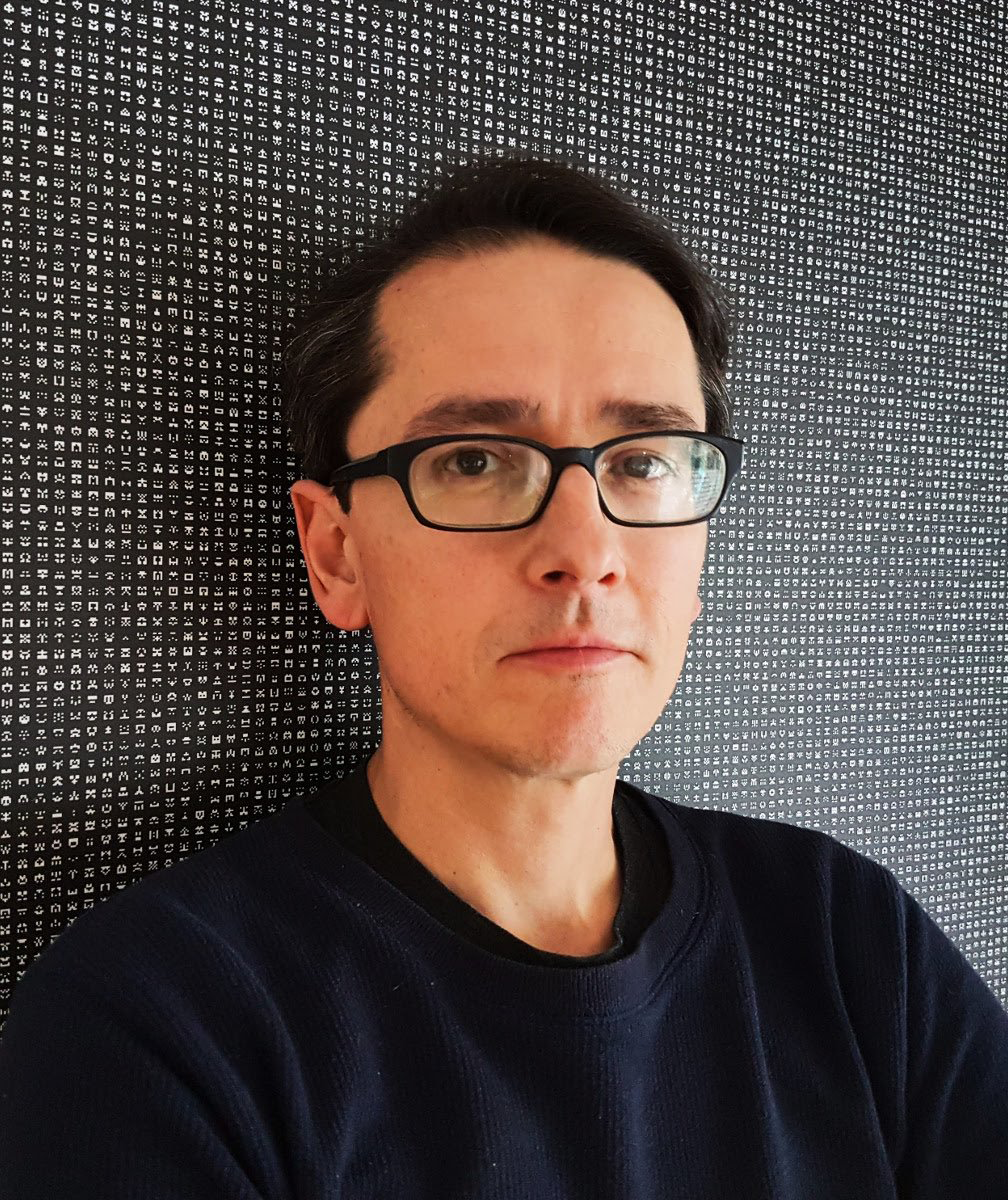 Mario Klingemann is an artist working with algorithms and data. He investigates the possibilities that machine learning and artificial intelligence offer in understanding how creativity, culture and their perception work. He also works with digital cultural archives like the British Library’s, the Internet Archive’s or the collection of the Google Arts & Culture where he currently is artist in residence.
Mario Klingemann is an artist working with algorithms and data. He investigates the possibilities that machine learning and artificial intelligence offer in understanding how creativity, culture and their perception work. He also works with digital cultural archives like the British Library’s, the Internet Archive’s or the collection of the Google Arts & Culture where he currently is artist in residence.
 Gene Kogan is an artist and a programmer who is interested in generative systems, computer science, and software for creativity and self-expression. He is a collaborator within numerous open-source software projects and has given many workshops and lectures about the relationship between code and art. He initiated ml4a, a free book about machine learning for artists, activists, and citizen scientists, and regularly publishes video lectures, writings, and tutorials to facilitate a greater public understanding of the subject.
Gene Kogan is an artist and a programmer who is interested in generative systems, computer science, and software for creativity and self-expression. He is a collaborator within numerous open-source software projects and has given many workshops and lectures about the relationship between code and art. He initiated ml4a, a free book about machine learning for artists, activists, and citizen scientists, and regularly publishes video lectures, writings, and tutorials to facilitate a greater public understanding of the subject.
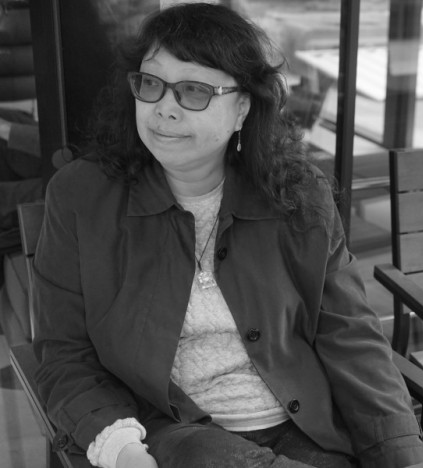 Linda Chiu-han LAI, Associate Professor in Intermedia Arts at the City University of Hong Kong’s School of Creative Media (SCM), is a research-based interdisciplinary artist. After completing her Ph.D. in Cinema Studies at New York University, she has sought meaningful connective extension to other relevant artistic and theoretical endeavors. Her teaching revolves around the criticality of micro/meta narrativity. She has also designed, at SCM, Hong Kong’s first courses in generative art & literature at the university level. She founded HK-based new media art group the Writing Machine Collective (2004) and has completed 5 major group exhibitions on questions of computational thinking and contemporary art. Though broadly known for her videography in the international art venues, she creates in different artistic mediums to turn art-making into criticism, history-writing, gaming and voyages of discovery. Her digital and non-digital works have been shown in key venues in many cities in Europe, Asia and the US, including the International Short Film Festival Oberhausen, the Open City London Documentary Festival, LOOP Barcelona, Rencontres Internationales Paris/Berlin, the Jihlava International Documentary Film Festival in the Czech Republic, the Fourth State of Water (CoCA, Torun, Poland), Women Make Waves Film Festival (Taipei), International Centre (New Delhi), and the various Experimental Film/Video Festivals in Seoul (EXiS), Taipei (EXiT), Macao (EXiM), Kuala Lumpur (KLEX) and Hong Kong (HKEX).
Linda Chiu-han LAI, Associate Professor in Intermedia Arts at the City University of Hong Kong’s School of Creative Media (SCM), is a research-based interdisciplinary artist. After completing her Ph.D. in Cinema Studies at New York University, she has sought meaningful connective extension to other relevant artistic and theoretical endeavors. Her teaching revolves around the criticality of micro/meta narrativity. She has also designed, at SCM, Hong Kong’s first courses in generative art & literature at the university level. She founded HK-based new media art group the Writing Machine Collective (2004) and has completed 5 major group exhibitions on questions of computational thinking and contemporary art. Though broadly known for her videography in the international art venues, she creates in different artistic mediums to turn art-making into criticism, history-writing, gaming and voyages of discovery. Her digital and non-digital works have been shown in key venues in many cities in Europe, Asia and the US, including the International Short Film Festival Oberhausen, the Open City London Documentary Festival, LOOP Barcelona, Rencontres Internationales Paris/Berlin, the Jihlava International Documentary Film Festival in the Czech Republic, the Fourth State of Water (CoCA, Torun, Poland), Women Make Waves Film Festival (Taipei), International Centre (New Delhi), and the various Experimental Film/Video Festivals in Seoul (EXiS), Taipei (EXiT), Macao (EXiM), Kuala Lumpur (KLEX) and Hong Kong (HKEX).
 Tomas Laurenzo is an artist, designer, and computer scientist who works with both physical and digital media exploring the artistic construction of meaning and its relation with power and politics. He works in various areas, including interactive art, music, live cinema, physical computing and installation. He is Assistant Professor at the City University of Hong Kong. He previously was Assistant Professor at the Universidad de la Republica (Uruguay), where he founded and directed the Media Lab. He has held residencies at Microsoft Research, Carnegie Mellon University, INRIA, etc.
Tomas Laurenzo is an artist, designer, and computer scientist who works with both physical and digital media exploring the artistic construction of meaning and its relation with power and politics. He works in various areas, including interactive art, music, live cinema, physical computing and installation. He is Assistant Professor at the City University of Hong Kong. He previously was Assistant Professor at the Universidad de la Republica (Uruguay), where he founded and directed the Media Lab. He has held residencies at Microsoft Research, Carnegie Mellon University, INRIA, etc.
 Thom Miano is a research data scientist at RTI International where he currently builds imaging software using computer vision techniques. He has experience in applied machine learning research and development, working largely in healthcare and education. He works with mixed and multimedia art. His main interests are machine (and biological) learning, realtime multi-modal sensor networks, image and signal processing, generative systems, and human-computer interaction.
Thom Miano is a research data scientist at RTI International where he currently builds imaging software using computer vision techniques. He has experience in applied machine learning research and development, working largely in healthcare and education. He works with mixed and multimedia art. His main interests are machine (and biological) learning, realtime multi-modal sensor networks, image and signal processing, generative systems, and human-computer interaction.
 Guillermo Moncecchi is a Natural Language/Machine Learning Researcher and Deputy Minister for Industry, Energy, and Mining of the Republic of Uruguay. He has a doctorate in Computer Science from the Univeristé Paris Quest, specializing in natural language processing and machine learning. He has taught in the Engineering Faulty of the Universidad de la Republica (Montevideo) and has over 20 years of experience in software development.
Guillermo Moncecchi is a Natural Language/Machine Learning Researcher and Deputy Minister for Industry, Energy, and Mining of the Republic of Uruguay. He has a doctorate in Computer Science from the Univeristé Paris Quest, specializing in natural language processing and machine learning. He has taught in the Engineering Faulty of the Universidad de la Republica (Montevideo) and has over 20 years of experience in software development.
 Anna Ridler is an artist and researcher whose practice brings together technology, literature and drawing to create both art and critical writing. She works with abstract collections of information or data, particularly self-generated data sets, to create new and unusual narratives in a variety of mediums, and how new technologies, such as machine learning, can be used to translate them clearly to an audience and to talk about other things - memory, love, decay. She has degrees from the Royal College of Art, Oxford University, University of Arts London and has shown at a variety of cultural institutions and galleries including Ars Electronica, Sheffield Documentary Festival, Leverhulme Centre for Future Intelligence, Tate Modern, Centre Pompidou and the V&A.
Anna Ridler is an artist and researcher whose practice brings together technology, literature and drawing to create both art and critical writing. She works with abstract collections of information or data, particularly self-generated data sets, to create new and unusual narratives in a variety of mediums, and how new technologies, such as machine learning, can be used to translate them clearly to an audience and to talk about other things - memory, love, decay. She has degrees from the Royal College of Art, Oxford University, University of Arts London and has shown at a variety of cultural institutions and galleries including Ars Electronica, Sheffield Documentary Festival, Leverhulme Centre for Future Intelligence, Tate Modern, Centre Pompidou and the V&A.
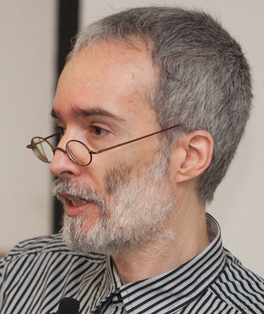 Hector Rodríguez is a digital artist and theorist whose work explores the unique possibilities of computational technologies to reconfigure the history and aesthetics of moving images. His animation Res Extensa received the award for best digital work in the Hong Kong Art Biennial 2003. His 2012 video installation Gestus: Judex received an achievement award at the Hong Kong Contemporary Art Awards and was a jury selection of the Japan Media Art Festival. He received a commendation award from the Hong Kong Government for his contributions to art and culture in 2015. He was Artistic Director of the Microwave International Media Art Festival, and is now a member of the Writing Machine Collective. He currently teaches at the School of Creative Media, City University of Hong Kong.
Hector Rodríguez is a digital artist and theorist whose work explores the unique possibilities of computational technologies to reconfigure the history and aesthetics of moving images. His animation Res Extensa received the award for best digital work in the Hong Kong Art Biennial 2003. His 2012 video installation Gestus: Judex received an achievement award at the Hong Kong Contemporary Art Awards and was a jury selection of the Japan Media Art Festival. He received a commendation award from the Hong Kong Government for his contributions to art and culture in 2015. He was Artistic Director of the Microwave International Media Art Festival, and is now a member of the Writing Machine Collective. He currently teaches at the School of Creative Media, City University of Hong Kong.
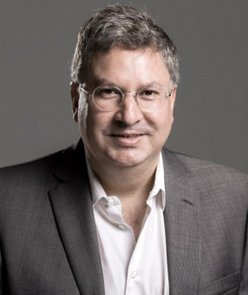 Álvaro Rodríguez Fominaya is Artistic Director of the C3A. He served from 2011–15 as the curator in charge of collections and exhibitions at the Guggenheim Museum Bilbao, where he also founded the film and video gallery, organizing exhibitions by Christian Marclay, Ragnar Kjartansson, Rineke Dijkstra, Kimsooja, and Shahzia Sikander. From 2008 to 2011, he served as executive director/Curator of Para/Site Art Space, Hong Kong; and between 2002 to 2008, he served in successive positions at Centro Atlántico de Arte Moderno (CAAM), Spain, as curator, chief curator, and acting director, where he organized monographic exhibitions by Paul Klee, Jean Tinguely, Niki de Saint Phalle, and Joseph Kosuth, as well as group shows such as Weather Report. Climate Change and Visual Arts; Scrabble: Video, Language and Abstraction; and ¡Viva La Muerte! Art and Death In Latin America. In addition to his curatorial work, Fominaya has been a consultant lecturer at Sotheby’s Institute of Art, Singapore, part-time lecturer at City University of Hong Kong's School of Creative Media, and program leader of the Para/Site Art Space-Hong Kong Jockey Club Curatorial Training Program, and has contributed to multiple international art publications. He completed the Postgraduate Program in Curatorial Studies at Fundación “la Caixa” in Barcelona.
Álvaro Rodríguez Fominaya is Artistic Director of the C3A. He served from 2011–15 as the curator in charge of collections and exhibitions at the Guggenheim Museum Bilbao, where he also founded the film and video gallery, organizing exhibitions by Christian Marclay, Ragnar Kjartansson, Rineke Dijkstra, Kimsooja, and Shahzia Sikander. From 2008 to 2011, he served as executive director/Curator of Para/Site Art Space, Hong Kong; and between 2002 to 2008, he served in successive positions at Centro Atlántico de Arte Moderno (CAAM), Spain, as curator, chief curator, and acting director, where he organized monographic exhibitions by Paul Klee, Jean Tinguely, Niki de Saint Phalle, and Joseph Kosuth, as well as group shows such as Weather Report. Climate Change and Visual Arts; Scrabble: Video, Language and Abstraction; and ¡Viva La Muerte! Art and Death In Latin America. In addition to his curatorial work, Fominaya has been a consultant lecturer at Sotheby’s Institute of Art, Singapore, part-time lecturer at City University of Hong Kong's School of Creative Media, and program leader of the Para/Site Art Space-Hong Kong Jockey Club Curatorial Training Program, and has contributed to multiple international art publications. He completed the Postgraduate Program in Curatorial Studies at Fundación “la Caixa” in Barcelona.
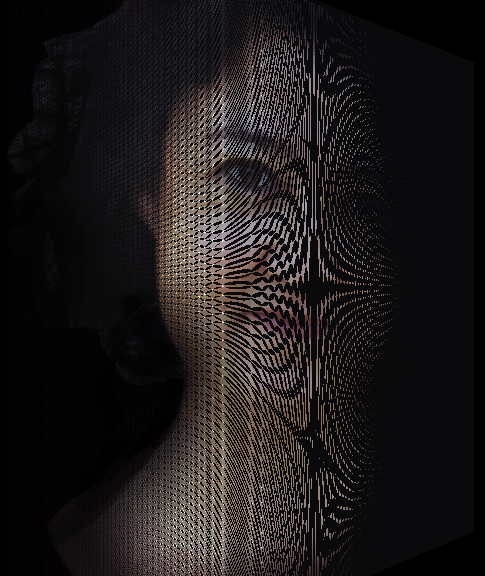 Pilar Rosado Rodrigo has a Ph.D. in Fine Arts and Biology and currently teaches at the University of Barcelona. She has published many essays on the relationship between computer vision and artistic analysis, about the application of semantic-based image analysis methods for artistic creation, and about experimental poetry and urban art. She has published her work with the Leonardo MIT Journal. She is member of the International Program Committee of the ICVSA - Special Session on Intelligent Computer Vision Systems and Applications at the 9th Asian Conference on Intelligent Information and Database Systems (ACIIDS 2017). She is artist in residence at Roca Umbert Fàbrica de les Arts in Granollers (Barcelona).
Pilar Rosado Rodrigo has a Ph.D. in Fine Arts and Biology and currently teaches at the University of Barcelona. She has published many essays on the relationship between computer vision and artistic analysis, about the application of semantic-based image analysis methods for artistic creation, and about experimental poetry and urban art. She has published her work with the Leonardo MIT Journal. She is member of the International Program Committee of the ICVSA - Special Session on Intelligent Computer Vision Systems and Applications at the 9th Asian Conference on Intelligent Information and Database Systems (ACIIDS 2017). She is artist in residence at Roca Umbert Fàbrica de les Arts in Granollers (Barcelona).

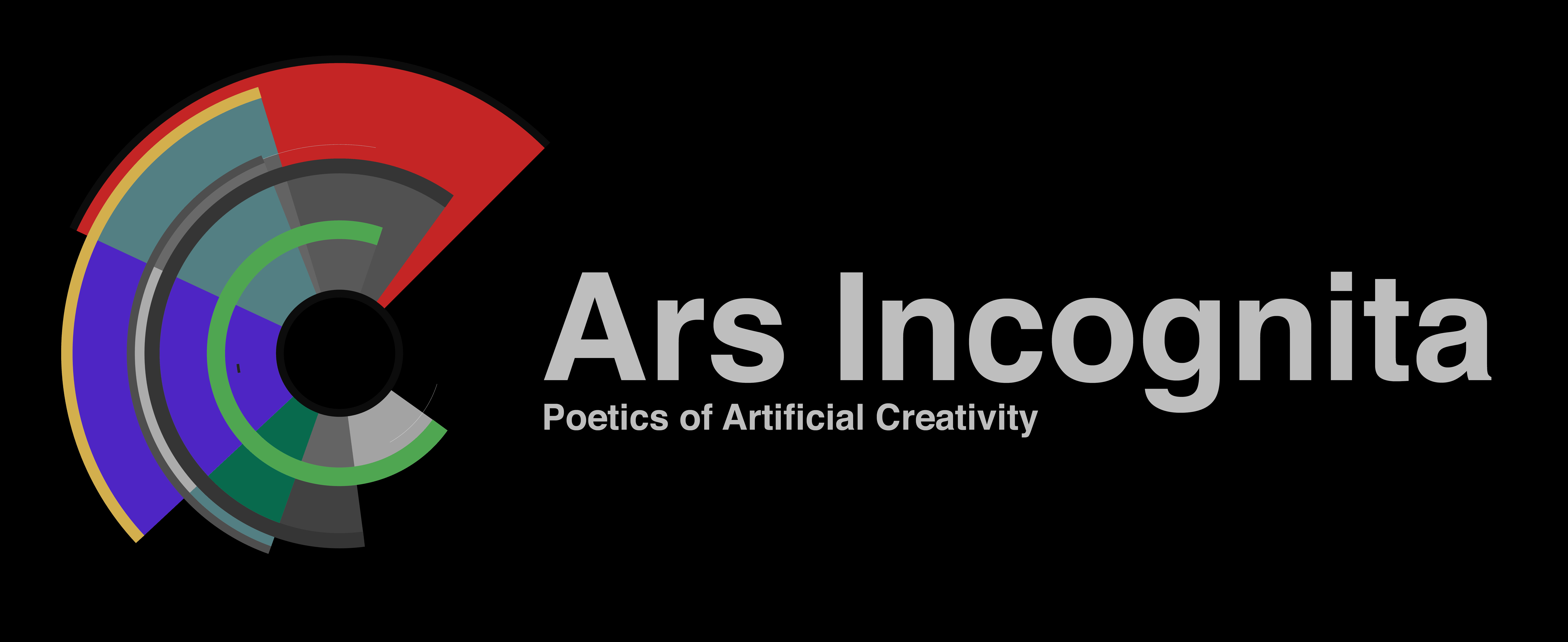
 Richard Allen works in the areas of film theory and aesthetics. His first book, Projecting Illusion (1997), articulated a sophisticated version of the illusion theory of representation. He edited, with Murray Smith, one of the first anthologies of analytic film theory, Film Theory and Philosophy (1999) and co-edited, with Malcolm Turvey, Wittgenstein, Theory, and the Arts (2001). He is the author of the widely read book, Hitchcock’s Romantic Irony (2007), which examines the relationship between sexuality and style in Hitchcock’s work. Until recently he was editor of the Hitchcock Annual (Columbia University Press). He is working on a book called Bollywood Poetics and is also researching The Passion of Christ and the Melodramatic Imagination. He is currently Dean and Chair Professor of Film and Media Art at the School of Creative Media of the City University of Hong Kong.
Richard Allen works in the areas of film theory and aesthetics. His first book, Projecting Illusion (1997), articulated a sophisticated version of the illusion theory of representation. He edited, with Murray Smith, one of the first anthologies of analytic film theory, Film Theory and Philosophy (1999) and co-edited, with Malcolm Turvey, Wittgenstein, Theory, and the Arts (2001). He is the author of the widely read book, Hitchcock’s Romantic Irony (2007), which examines the relationship between sexuality and style in Hitchcock’s work. Until recently he was editor of the Hitchcock Annual (Columbia University Press). He is working on a book called Bollywood Poetics and is also researching The Passion of Christ and the Melodramatic Imagination. He is currently Dean and Chair Professor of Film and Media Art at the School of Creative Media of the City University of Hong Kong. Sandra Álvaro holds a European Doctorate in Philosophy from the Universitat Autònoma de Barcelona, and is also a new media artist. Her research work revolves around the definition of the contemporary post-digital situation, with a particular focus on artistic production and theory and participatory urban design. To this end, she studies the material conditions and social processes linked to technological innovations such as the Internet of Things, data visualisation, and digital fabrication. She has carried out projects and participated in international workshops at the Institute for Pure and Applied Mathematics at UCLA and the Laboratoire Paragraphe/CITU, University Paris 8, and taught in the Roy Ascott Studio BA in Technoetic Arts at De Tao Masters Academy in Shanghai. She has published in refereed journals such as the Technoetics Art Journal (Intellect) and Artnodes and has participated in numerous international congresses including CAC 2016 (Paris), ISEA 2015 (Vancouver), Re-new 2013 (Copenhagen) and the CR13 International Research Conference. Her work has been exhibited at many museums and cultural centres including Caixa Forum, the Generalitat de Catalunya’s Department of Culture and Media, Casal Solleric in Palma de Mallorca (Antoni Gelabert Visual Arts Award), MOCA (Taipei) and the Museo de Arte Moderno de Toluca (Mexico) and in numerous festivals and galleries.
Sandra Álvaro holds a European Doctorate in Philosophy from the Universitat Autònoma de Barcelona, and is also a new media artist. Her research work revolves around the definition of the contemporary post-digital situation, with a particular focus on artistic production and theory and participatory urban design. To this end, she studies the material conditions and social processes linked to technological innovations such as the Internet of Things, data visualisation, and digital fabrication. She has carried out projects and participated in international workshops at the Institute for Pure and Applied Mathematics at UCLA and the Laboratoire Paragraphe/CITU, University Paris 8, and taught in the Roy Ascott Studio BA in Technoetic Arts at De Tao Masters Academy in Shanghai. She has published in refereed journals such as the Technoetics Art Journal (Intellect) and Artnodes and has participated in numerous international congresses including CAC 2016 (Paris), ISEA 2015 (Vancouver), Re-new 2013 (Copenhagen) and the CR13 International Research Conference. Her work has been exhibited at many museums and cultural centres including Caixa Forum, the Generalitat de Catalunya’s Department of Culture and Media, Casal Solleric in Palma de Mallorca (Antoni Gelabert Visual Arts Award), MOCA (Taipei) and the Museo de Arte Moderno de Toluca (Mexico) and in numerous festivals and galleries. Albert Barque-Duran is an artist and postdoctoral research in cognitive science at the City University of London. His research concerns new approaches and frameworks for cognitive modelling and judgment and decision-making. His artwork and performances are inspired by his research and combine classical techniques from fine arts such as oil painting, data, digital arts and experimental electronic music. He has exhibited and performed at Sónar+D (Barcelona), Creative Reactions (London), Cambridge Neuroscience Society (Cambridge, UK), Max Planck (Berlin), and the SciArt Center (New York).
Albert Barque-Duran is an artist and postdoctoral research in cognitive science at the City University of London. His research concerns new approaches and frameworks for cognitive modelling and judgment and decision-making. His artwork and performances are inspired by his research and combine classical techniques from fine arts such as oil painting, data, digital arts and experimental electronic music. He has exhibited and performed at Sónar+D (Barcelona), Creative Reactions (London), Cambridge Neuroscience Society (Cambridge, UK), Max Planck (Berlin), and the SciArt Center (New York). Álvaro Cassinelli is a researcher, inventor and media artist. He received a Ph.D. in Physics/Optics from the University of Paris X. He had previously received an engineering degree from Telecom Paris Tech specializing in image processing. He is currently visiting researcher at the Institute Langevin/ESPCI (Paris). He has held internships at the Optoelectronic Lab at Telecom Paris Tech and the Quantum Optics Lab at Ecole Polytechnique (Paris), among others. He has carried out research on Human Computer interfaces using novel optical technologies, in particular smart sensors using laser technology. He has also worked in the areas of ubiquitous computing and augmented inter-personal communication. His Khronos Projector won an Honorary Mention at the Prix Ars Electronica. Awards received include the Grand Prize (Art Division) at the Japan Media Art Festival and the Nissan Research Challenge Innovative Concept Award.
Álvaro Cassinelli is a researcher, inventor and media artist. He received a Ph.D. in Physics/Optics from the University of Paris X. He had previously received an engineering degree from Telecom Paris Tech specializing in image processing. He is currently visiting researcher at the Institute Langevin/ESPCI (Paris). He has held internships at the Optoelectronic Lab at Telecom Paris Tech and the Quantum Optics Lab at Ecole Polytechnique (Paris), among others. He has carried out research on Human Computer interfaces using novel optical technologies, in particular smart sensors using laser technology. He has also worked in the areas of ubiquitous computing and augmented inter-personal communication. His Khronos Projector won an Honorary Mention at the Prix Ars Electronica. Awards received include the Grand Prize (Art Division) at the Japan Media Art Festival and the Nissan Research Challenge Innovative Concept Award. Luba Elliottis a curator, artist and researcher specialising in artificial intelligence in the creative industries. She is currently working to educate and engage the broader public about the latest developments in creative AI. As curator, she organised workshops and exhibitions on art and AI for The Photographers’ Gallery, the Leverhulme Centre for the Future of Intelligence and Google. Prior to that, she worked in start-ups, including the art collector database Larry’s List.
Luba Elliottis a curator, artist and researcher specialising in artificial intelligence in the creative industries. She is currently working to educate and engage the broader public about the latest developments in creative AI. As curator, she organised workshops and exhibitions on art and AI for The Photographers’ Gallery, the Leverhulme Centre for the Future of Intelligence and Google. Prior to that, she worked in start-ups, including the art collector database Larry’s List. Coralie Gourguechon is an interdisciplinary designer & researcher working with user interfaces, experience design, interactive installation, and physical computing. She was one of 30 creatives selected for the ADC Young Guns Award 2016 and has been granted residencies at Hors-Pistes, Aterlier Luman, Ideo Munich, and Fabrica, where she was one of the key participants in the Recognition Project at the Tate.
Coralie Gourguechon is an interdisciplinary designer & researcher working with user interfaces, experience design, interactive installation, and physical computing. She was one of 30 creatives selected for the ADC Young Guns Award 2016 and has been granted residencies at Hors-Pistes, Aterlier Luman, Ideo Munich, and Fabrica, where she was one of the key participants in the Recognition Project at the Tate. Monica Lanaro, project manager at Fabrica, has worked for the Dedalo Minosse Prize commissioning a building in Vicenza, for Festivaletteratura in Mantova and for the Peggy Guggenheim Collection in Venice.
Monica Lanaro, project manager at Fabrica, has worked for the Dedalo Minosse Prize commissioning a building in Vicenza, for Festivaletteratura in Mantova and for the Peggy Guggenheim Collection in Venice. Angelo Semeraro studied Computer Science at the University of Bologna. Now based at Fabrica, his works include interactive installations and mobile applications experimenting with the perception of sounds and spaces, and the boundary between physical and digital.
Angelo Semeraro studied Computer Science at the University of Bologna. Now based at Fabrica, his works include interactive installations and mobile applications experimenting with the perception of sounds and spaces, and the boundary between physical and digital. Javier de Felipe is a neuroscientist who leads the Cajal Blue Brain project, which is part of the international Blue Brain project. He is co-director of the division of Molecular and Cellular Neuroscience of the Human Brain Project. He has received many international awards, including the Krieg Cortical Kudos Award granted by Cajal Club for his contributions to the study of the cerebral cortex. He is also an honorary member of the American Association of Anatomists.
Javier de Felipe is a neuroscientist who leads the Cajal Blue Brain project, which is part of the international Blue Brain project. He is co-director of the division of Molecular and Cellular Neuroscience of the Human Brain Project. He has received many international awards, including the Krieg Cortical Kudos Award granted by Cajal Club for his contributions to the study of the cerebral cortex. He is also an honorary member of the American Association of Anatomists. Jolibrain ( right: Alexandre Girard and left: Emmanuel Benazera ) is a company based in Toulouse, France, specializing in open-source involving real-world applications of machine learning for industries that range from large Cybersecurity players to top Art institutions, AI hardware startups and manufacturers, Aerospace leaders and machine learning startups around the globe. They have created the open source deep learning API and server DeepDetect as well and developed the software for the Tate Recognition exhibition together with a team from Fabrica (Coralie Gourguechon, Monica Lanaro, Angelo Semeraro) .
Jolibrain ( right: Alexandre Girard and left: Emmanuel Benazera ) is a company based in Toulouse, France, specializing in open-source involving real-world applications of machine learning for industries that range from large Cybersecurity players to top Art institutions, AI hardware startups and manufacturers, Aerospace leaders and machine learning startups around the globe. They have created the open source deep learning API and server DeepDetect as well and developed the software for the Tate Recognition exhibition together with a team from Fabrica (Coralie Gourguechon, Monica Lanaro, Angelo Semeraro) . Mario Klingemann is an artist working with algorithms and data. He investigates the possibilities that machine learning and artificial intelligence offer in understanding how creativity, culture and their perception work. He also works with digital cultural archives like the British Library’s, the Internet Archive’s or the collection of the Google Arts & Culture where he currently is artist in residence.
Mario Klingemann is an artist working with algorithms and data. He investigates the possibilities that machine learning and artificial intelligence offer in understanding how creativity, culture and their perception work. He also works with digital cultural archives like the British Library’s, the Internet Archive’s or the collection of the Google Arts & Culture where he currently is artist in residence. Gene Kogan is an artist and a programmer who is interested in generative systems, computer science, and software for creativity and self-expression. He is a collaborator within numerous open-source software projects and has given many workshops and lectures about the relationship between code and art. He initiated ml4a, a free book about machine learning for artists, activists, and citizen scientists, and regularly publishes video lectures, writings, and tutorials to facilitate a greater public understanding of the subject.
Gene Kogan is an artist and a programmer who is interested in generative systems, computer science, and software for creativity and self-expression. He is a collaborator within numerous open-source software projects and has given many workshops and lectures about the relationship between code and art. He initiated ml4a, a free book about machine learning for artists, activists, and citizen scientists, and regularly publishes video lectures, writings, and tutorials to facilitate a greater public understanding of the subject. Linda Chiu-han LAI, Associate Professor in Intermedia Arts at the City University of Hong Kong’s School of Creative Media (SCM), is a research-based interdisciplinary artist. After completing her Ph.D. in Cinema Studies at New York University, she has sought meaningful connective extension to other relevant artistic and theoretical endeavors. Her teaching revolves around the criticality of micro/meta narrativity. She has also designed, at SCM, Hong Kong’s first courses in generative art & literature at the university level. She founded HK-based new media art group the Writing Machine Collective (2004) and has completed 5 major group exhibitions on questions of computational thinking and contemporary art. Though broadly known for her videography in the international art venues, she creates in different artistic mediums to turn art-making into criticism, history-writing, gaming and voyages of discovery. Her digital and non-digital works have been shown in key venues in many cities in Europe, Asia and the US, including the International Short Film Festival Oberhausen, the Open City London Documentary Festival, LOOP Barcelona, Rencontres Internationales Paris/Berlin, the Jihlava International Documentary Film Festival in the Czech Republic, the Fourth State of Water (CoCA, Torun, Poland), Women Make Waves Film Festival (Taipei), International Centre (New Delhi), and the various Experimental Film/Video Festivals in Seoul (EXiS), Taipei (EXiT), Macao (EXiM), Kuala Lumpur (KLEX) and Hong Kong (HKEX).
Linda Chiu-han LAI, Associate Professor in Intermedia Arts at the City University of Hong Kong’s School of Creative Media (SCM), is a research-based interdisciplinary artist. After completing her Ph.D. in Cinema Studies at New York University, she has sought meaningful connective extension to other relevant artistic and theoretical endeavors. Her teaching revolves around the criticality of micro/meta narrativity. She has also designed, at SCM, Hong Kong’s first courses in generative art & literature at the university level. She founded HK-based new media art group the Writing Machine Collective (2004) and has completed 5 major group exhibitions on questions of computational thinking and contemporary art. Though broadly known for her videography in the international art venues, she creates in different artistic mediums to turn art-making into criticism, history-writing, gaming and voyages of discovery. Her digital and non-digital works have been shown in key venues in many cities in Europe, Asia and the US, including the International Short Film Festival Oberhausen, the Open City London Documentary Festival, LOOP Barcelona, Rencontres Internationales Paris/Berlin, the Jihlava International Documentary Film Festival in the Czech Republic, the Fourth State of Water (CoCA, Torun, Poland), Women Make Waves Film Festival (Taipei), International Centre (New Delhi), and the various Experimental Film/Video Festivals in Seoul (EXiS), Taipei (EXiT), Macao (EXiM), Kuala Lumpur (KLEX) and Hong Kong (HKEX). Tomas Laurenzo is an artist, designer, and computer scientist who works with both physical and digital media exploring the artistic construction of meaning and its relation with power and politics. He works in various areas, including interactive art, music, live cinema, physical computing and installation. He is Assistant Professor at the City University of Hong Kong. He previously was Assistant Professor at the Universidad de la Republica (Uruguay), where he founded and directed the Media Lab. He has held residencies at Microsoft Research, Carnegie Mellon University, INRIA, etc.
Tomas Laurenzo is an artist, designer, and computer scientist who works with both physical and digital media exploring the artistic construction of meaning and its relation with power and politics. He works in various areas, including interactive art, music, live cinema, physical computing and installation. He is Assistant Professor at the City University of Hong Kong. He previously was Assistant Professor at the Universidad de la Republica (Uruguay), where he founded and directed the Media Lab. He has held residencies at Microsoft Research, Carnegie Mellon University, INRIA, etc. Thom Miano is a research data scientist at RTI International where he currently builds imaging software using computer vision techniques. He has experience in applied machine learning research and development, working largely in healthcare and education. He works with mixed and multimedia art. His main interests are machine (and biological) learning, realtime multi-modal sensor networks, image and signal processing, generative systems, and human-computer interaction.
Thom Miano is a research data scientist at RTI International where he currently builds imaging software using computer vision techniques. He has experience in applied machine learning research and development, working largely in healthcare and education. He works with mixed and multimedia art. His main interests are machine (and biological) learning, realtime multi-modal sensor networks, image and signal processing, generative systems, and human-computer interaction.  Guillermo Moncecchi is a Natural Language/Machine Learning Researcher and Deputy Minister for Industry, Energy, and Mining of the Republic of Uruguay. He has a doctorate in Computer Science from the Univeristé Paris Quest, specializing in natural language processing and machine learning. He has taught in the Engineering Faulty of the Universidad de la Republica (Montevideo) and has over 20 years of experience in software development.
Guillermo Moncecchi is a Natural Language/Machine Learning Researcher and Deputy Minister for Industry, Energy, and Mining of the Republic of Uruguay. He has a doctorate in Computer Science from the Univeristé Paris Quest, specializing in natural language processing and machine learning. He has taught in the Engineering Faulty of the Universidad de la Republica (Montevideo) and has over 20 years of experience in software development. Anna Ridler is an artist and researcher whose practice brings together technology, literature and drawing to create both art and critical writing. She works with abstract collections of information or data, particularly self-generated data sets, to create new and unusual narratives in a variety of mediums, and how new technologies, such as machine learning, can be used to translate them clearly to an audience and to talk about other things - memory, love, decay. She has degrees from the Royal College of Art, Oxford University, University of Arts London and has shown at a variety of cultural institutions and galleries including Ars Electronica, Sheffield Documentary Festival, Leverhulme Centre for Future Intelligence, Tate Modern, Centre Pompidou and the V&A.
Anna Ridler is an artist and researcher whose practice brings together technology, literature and drawing to create both art and critical writing. She works with abstract collections of information or data, particularly self-generated data sets, to create new and unusual narratives in a variety of mediums, and how new technologies, such as machine learning, can be used to translate them clearly to an audience and to talk about other things - memory, love, decay. She has degrees from the Royal College of Art, Oxford University, University of Arts London and has shown at a variety of cultural institutions and galleries including Ars Electronica, Sheffield Documentary Festival, Leverhulme Centre for Future Intelligence, Tate Modern, Centre Pompidou and the V&A.  Hector Rodríguez is a digital artist and theorist whose work explores the unique possibilities of computational technologies to reconfigure the history and aesthetics of moving images. His animation Res Extensa received the award for best digital work in the Hong Kong Art Biennial 2003. His 2012 video installation Gestus: Judex received an achievement award at the Hong Kong Contemporary Art Awards and was a jury selection of the Japan Media Art Festival. He received a commendation award from the Hong Kong Government for his contributions to art and culture in 2015. He was Artistic Director of the Microwave International Media Art Festival, and is now a member of the Writing Machine Collective. He currently teaches at the School of Creative Media, City University of Hong Kong.
Hector Rodríguez is a digital artist and theorist whose work explores the unique possibilities of computational technologies to reconfigure the history and aesthetics of moving images. His animation Res Extensa received the award for best digital work in the Hong Kong Art Biennial 2003. His 2012 video installation Gestus: Judex received an achievement award at the Hong Kong Contemporary Art Awards and was a jury selection of the Japan Media Art Festival. He received a commendation award from the Hong Kong Government for his contributions to art and culture in 2015. He was Artistic Director of the Microwave International Media Art Festival, and is now a member of the Writing Machine Collective. He currently teaches at the School of Creative Media, City University of Hong Kong. Álvaro Rodríguez Fominaya is Artistic Director of the C3A. He served from 2011–15 as the curator in charge of collections and exhibitions at the Guggenheim Museum Bilbao, where he also founded the film and video gallery, organizing exhibitions by Christian Marclay, Ragnar Kjartansson, Rineke Dijkstra, Kimsooja, and Shahzia Sikander. From 2008 to 2011, he served as executive director/Curator of Para/Site Art Space, Hong Kong; and between 2002 to 2008, he served in successive positions at Centro Atlántico de Arte Moderno (CAAM), Spain, as curator, chief curator, and acting director, where he organized monographic exhibitions by Paul Klee, Jean Tinguely, Niki de Saint Phalle, and Joseph Kosuth, as well as group shows such as Weather Report. Climate Change and Visual Arts; Scrabble: Video, Language and Abstraction; and ¡Viva La Muerte! Art and Death In Latin America. In addition to his curatorial work, Fominaya has been a consultant lecturer at Sotheby’s Institute of Art, Singapore, part-time lecturer at City University of Hong Kong's School of Creative Media, and program leader of the Para/Site Art Space-Hong Kong Jockey Club Curatorial Training Program, and has contributed to multiple international art publications. He completed the Postgraduate Program in Curatorial Studies at Fundación “la Caixa” in Barcelona.
Álvaro Rodríguez Fominaya is Artistic Director of the C3A. He served from 2011–15 as the curator in charge of collections and exhibitions at the Guggenheim Museum Bilbao, where he also founded the film and video gallery, organizing exhibitions by Christian Marclay, Ragnar Kjartansson, Rineke Dijkstra, Kimsooja, and Shahzia Sikander. From 2008 to 2011, he served as executive director/Curator of Para/Site Art Space, Hong Kong; and between 2002 to 2008, he served in successive positions at Centro Atlántico de Arte Moderno (CAAM), Spain, as curator, chief curator, and acting director, where he organized monographic exhibitions by Paul Klee, Jean Tinguely, Niki de Saint Phalle, and Joseph Kosuth, as well as group shows such as Weather Report. Climate Change and Visual Arts; Scrabble: Video, Language and Abstraction; and ¡Viva La Muerte! Art and Death In Latin America. In addition to his curatorial work, Fominaya has been a consultant lecturer at Sotheby’s Institute of Art, Singapore, part-time lecturer at City University of Hong Kong's School of Creative Media, and program leader of the Para/Site Art Space-Hong Kong Jockey Club Curatorial Training Program, and has contributed to multiple international art publications. He completed the Postgraduate Program in Curatorial Studies at Fundación “la Caixa” in Barcelona. Pilar Rosado Rodrigo has a Ph.D. in Fine Arts and Biology and currently teaches at the University of Barcelona. She has published many essays on the relationship between computer vision and artistic analysis, about the application of semantic-based image analysis methods for artistic creation, and about experimental poetry and urban art. She has published her work with the Leonardo MIT Journal. She is member of the International Program Committee of the ICVSA - Special Session on Intelligent Computer Vision Systems and Applications at the 9th Asian Conference on Intelligent Information and Database Systems (ACIIDS 2017). She is artist in residence at Roca Umbert Fàbrica de les Arts in Granollers (Barcelona).
Pilar Rosado Rodrigo has a Ph.D. in Fine Arts and Biology and currently teaches at the University of Barcelona. She has published many essays on the relationship between computer vision and artistic analysis, about the application of semantic-based image analysis methods for artistic creation, and about experimental poetry and urban art. She has published her work with the Leonardo MIT Journal. She is member of the International Program Committee of the ICVSA - Special Session on Intelligent Computer Vision Systems and Applications at the 9th Asian Conference on Intelligent Information and Database Systems (ACIIDS 2017). She is artist in residence at Roca Umbert Fàbrica de les Arts in Granollers (Barcelona).
